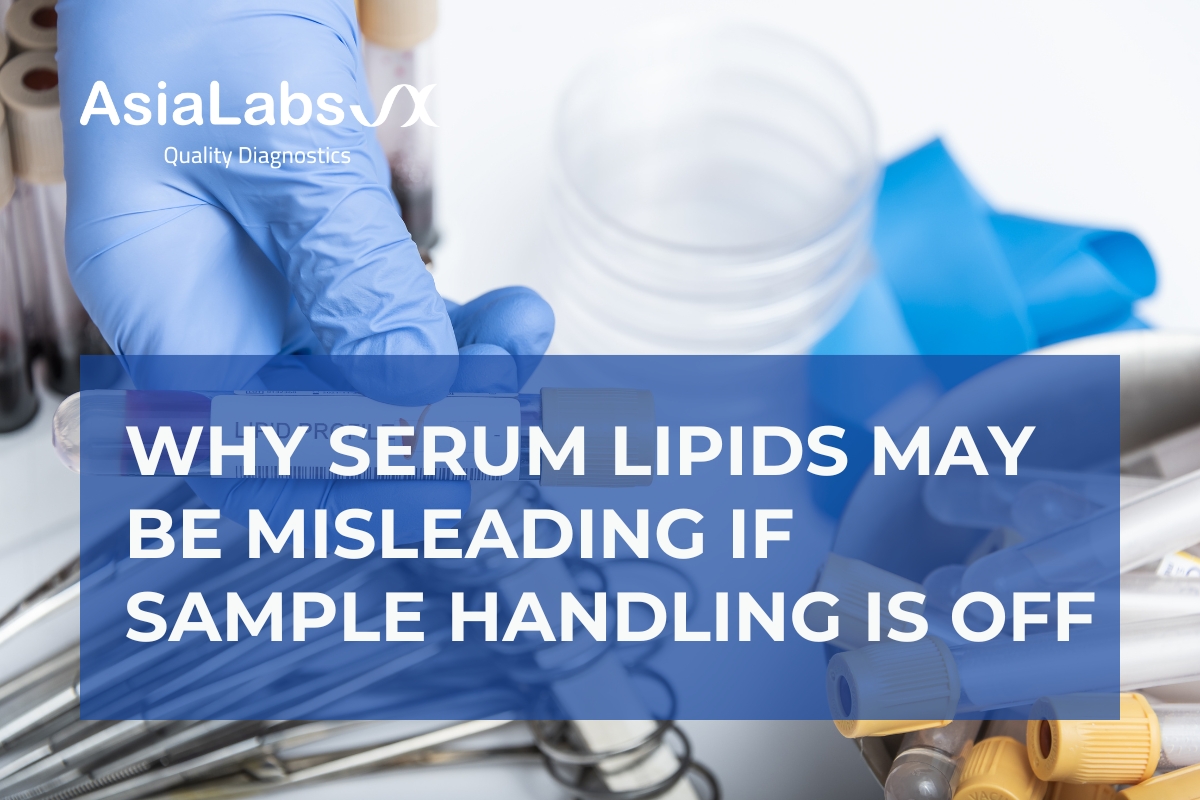Lipid panels are a cornerstone of cardiovascular risk assessment and management. For millions of patients on statins or other lipid-lowering therapies, these tests guide critical decisions about medication adjustments, lifestyle interventions, and long-term risk reduction. But what if the numbers you’re seeing aren’t telling the whole truth? If your patient’s LDL cholesterol remains stubbornly high despite good adherence to statins, it’s tempting to escalate the dose or add another drug. However, before you make that call, it’s essential to consider a less obvious culprit: pre-analytical errors in sample handling.
The Hidden Variables Behind Lipid Numbers
Serum lipid measurements—including total cholesterol, LDL, HDL, and triglycerides—are highly sensitive to how, when, and under what conditions the blood sample is collected and processed. Even the most disciplined patient and the best prescription can’t compensate for a compromised sample. Here’s why:
1. Hemolysis: The Silent Distorter
Hemolysis, or the rupture of red blood cells during or after blood collection, is a frequent and often invisible source of error. When red cells break, they release intracellular contents—such as cholesterol-rich cell membranes and enzymes—into the serum. This can artificially raise total cholesterol and, in some cases, alter triglyceride readings. Mild hemolysis may not be visible to the naked eye, making it a hidden threat to accurate lipid assessment.
2. Delayed Processing: Time Is of the Essence
Lipid samples are not stable indefinitely. Once blood is drawn, the clock starts ticking. If samples sit at room temperature for too long before being processed, enzymatic activity and cellular metabolism can degrade lipids or alter their measured concentrations. Triglycerides, in particular, are prone to breakdown over time, leading to falsely low results. Conversely, prolonged storage at improper temperatures can cause lipids to aggregate or degrade, skewing results in unpredictable ways.
3. Non-Fasting State: The Dietary Confounder
While recent guidelines allow for non-fasting lipid panels in many scenarios, fasting remains the gold standard for certain patients—especially those with high triglycerides or when monitoring for secondary causes of dyslipidemia. Recent food intake can transiently elevate triglyceride levels and, to a lesser extent, impact other lipid fractions. If your patient’s sample wasn’t collected in a fasting state, the results may not reflect their true baseline.
AsiaLabs: Precision in Every Step
At AsiaLabs, we understand that reliable lab data starts long before the sample reaches the analyzer. That’s why our workflow is designed to eliminate pre-analytical noise and deliver only high-confidence lipid values to clinicians.
Our Approach Includes:
-
Visual Hemolysis Grading and Optical Index Quantification: Every sample is screened for hemolysis, both by trained technicians and with automated optical detection. If hemolysis is present at a level that could affect lipid results, the sample is flagged and the affected values are clearly annotated in the report.
-
Cold-Chain Preservation: From the moment a blood sample leaves the clinic, it is maintained in a temperature-controlled environment. This cold-chain protocol prevents enzymatic degradation and preserves lipid integrity during transport and storage.
-
Time-Stamped Tracking: Each sample is digitally tracked with a time stamp, allowing us to verify that it was processed within the stability window recommended for lipid testing. Any sample that exceeds this window is flagged, and clinicians are notified that results may be unreliable.
-
Fasting Status Confirmation: We encourage clinics to document the patient’s fasting status at the time of collection, providing additional context for interpreting results.
Why This Matters: Real-World Clinical Scenarios
Imagine a patient who has been diligently taking their statin for months. Their LDL remains above target, and you’re considering increasing the dose or adding a second agent. But what if the sample was hemolyzed, or sat in a warm room for several hours before processing? Adjusting therapy based on erroneous data could expose the patient to unnecessary side effects, increase costs, and erode trust in the treatment plan.
Alternatively, consider a patient with newly elevated triglycerides. If the sample was non-fasting, the spike may be transient and not reflective of their usual state. Unnecessary dietary restrictions or medication changes could follow, all based on a single, misleading result.
The AsiaLabs Difference: Confidence in Every Number
Our rigorous approach to sample handling means that when you receive a lipid panel from AsiaLabs, you can trust that it reflects your patient’s true physiology—not artifacts of collection or processing. By flagging compromised samples and providing transparent reporting, we empower clinicians to make decisions based on data, not doubt.
The Benefits:
-
Avoid Therapeutic Missteps: No more adjusting medications based on faulty numbers.
-
Reduce Repeat Testing: Fewer redraws mean less inconvenience and anxiety for patients.
-
Build Patient Trust: When patients see that every detail is managed with precision, their confidence in your care grows.
Conclusion: Disciplined Data for Disciplined Care
In lipid management, as in all of medicine, accuracy matters. Don’t let pre-analytical errors cloud your clinical judgment or undermine your therapeutic strategy. With AsiaLabs, you can be sure that your lipid data is as disciplined as your prescription—giving you the clarity and confidence to deliver the best possible care.
Before you rush to adjust that statin dose, ask: Was the sample handled right? With AsiaLabs, the answer is always yes.

